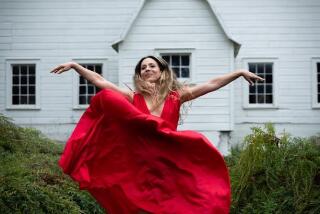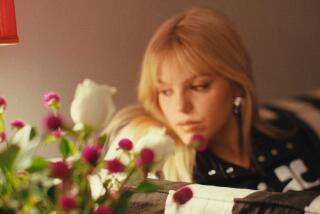POP MUSIC REVIEW : Zapp Zips Through a Funky, Dance-Happy Party
- Share via
ANAHEIM — There was more bounce to the oeuvre Friday night as Zapp zoomed into the Celebrity Theatre for what seemed like the zillionth time.
The longlived band from Dayton, Ohio, unwrapped pretty much the same box of funk confections as ever, including its 1980 breakthrough hit, “More Bounce to the Ounce.”
An ounce is about the sum total of the weight and substance of Zapp’s stage repertoire. But the band played with the exuberance and skill that can make a Zapp show seem like a rip-roaring party teetering on the edge of heady chaos, even though it actually is one of the most gimmicky and choreographed hours of pop programming extant.
The new element that made this Zapp show a little sweeter than good ones it has played in the past, and which gave some underlying substance to its diet of dance-happy fluff, was the concert’s subtext that hard work and devotion to craft do pay.
Bandleader Roger Troutman and the rest of his crew have been playing the Southern California market steadily for years, whether they had a hot record or not.
Now their new compilation, “Zapp & Roger: All the Greatest Hits,” is one of the Top 10 sellers in the region. That far outstrips its pace nationally, where it has ranged from Nos. 39 to 63 over the past month on Billboard magazine’s pop albums chart.
Rewarded with a near-capacity crowd, Zapp and Roger (who dispenses with the formality of a surname for stage purposes) paid back their young audience with a flawless, unflagging funk party.
As ever, the 60-minute show was loaded with gimmicks and plotted from start to finish.
One knew when the band huddled on stage as if puzzling over what to do next that it knew precisely what was coming. One knew that the ever-debonair Roger was going to exit a couple of times to change into another spiffy stage suit.
One also knew that besides strutting his wardrobe, he was going to strut his range by switching off among guitar, bass and harmonica, but that he would nevertheless spend most of the show working his “talk box.”
With this device, Roger can bend and shape phrases by mouthing them into a plastic tube attached to a keyboard synthesizer. The note he plays on the keyboard determines the pitch. The result sounded like the world’s most chirpy singing computer.
Sly Stone, Stevie Wonder, Joe Walsh, Peter Frampton and Neil Young all have famously used similar electronic effects. Only Roger has based an entire career on it.
By applying his gimmick to catchy melodies and innocuous lyrics expressing fondness for dance-floor action, romantic action, or both, Roger manages to turn what could have been pabulum into the musical equivalent of chocolate kisses. Once you start eating ‘em, you want another and another.
Along with the funky stuff--”More Bounce,” “I Can Make You Dance,” “Dance Floor,” and on and on--Zapp staved off sameness by playing its fetching romantic ballads, “Be Alright” and “I Want to Be Your Man.”
Add occasional rap segments to remain up-to-date with an audience made up mainly of fans in their teens and early 20s, and toss in all manner of innocent, nonstop-action antics, and you had a rapturously received set played to fans who took “I Can Make You Dance” not as a dare, but as an invitation.
By the way, you haven’t lived until you have seen a man of perhaps 300 pounds dance his way through “Whoomp! (There It Is)” wearing only a thong bikini bottom and a yellow fright wig. Think of it as the hip-hop equivalent of the dance of the hippo ballerinas in “Fantasia.” With such fare did Zapp cover for Roger during his quick wardrobe changes.
Shirley Murdock, a Roger protege who was backed by members of Zapp, opened with a 20-minute set that was undermined by a harsh sound mix and by the fact that a spinning stage cluttered with musicians and equipment is no place to be singing ballads.
Murdock, like virtually every other talented young R & B ballad singer in the land today, fell into the trap of trying to make up for tatty material with a too-fancy vocal embroidery.
The Dazz Band was billed second on an evening of uncomfortably long delays between sets (from the scheduled starting time, it took more than 3 1/2 hours to accomplish two hours of music).
This band also came out of Ohio in the late ‘70s (it is now based in Los Angeles), but its material was far less infectious than Zapp’s, and its crew of four singers failed to work the rotating stage well enough to keep the whole house involved.
The Dazz Band did work hard to get even part of the indifferent audience dancing, but just when it started to make progress, it foolishly killed the momentum with a humdrum bass solo.
Grady Harrell, one of the consortium of singers who shared equal time at the mike, emerged as an engaging figure who exuded a sense of enjoyment in performing with his sharp dance moves and a distinctive tenor voice that was both cottony and piercing.
More to Read
The biggest entertainment stories
Get our big stories about Hollywood, film, television, music, arts, culture and more right in your inbox as soon as they publish.
You may occasionally receive promotional content from the Los Angeles Times.









